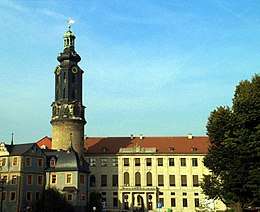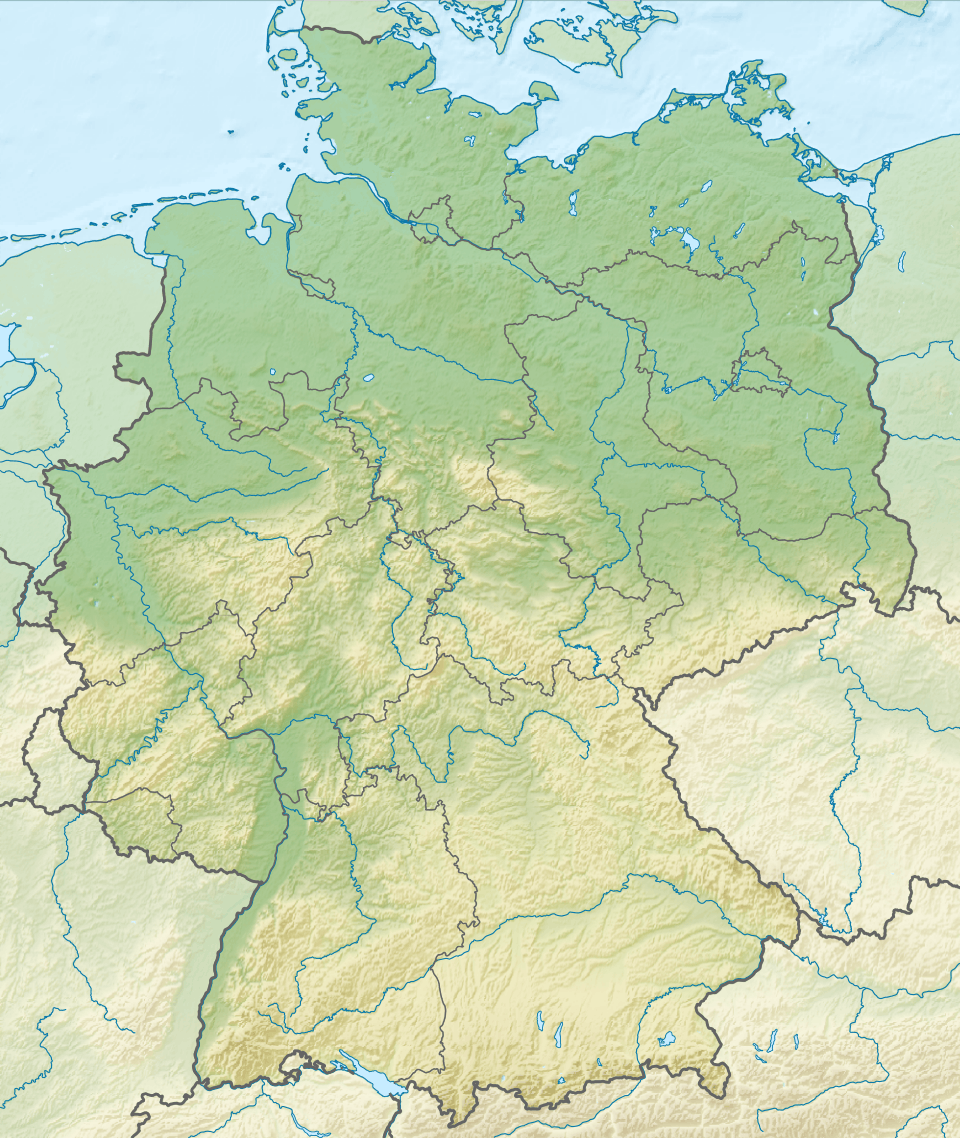Classical Weimar (World Heritage Site)
| UNESCO World Heritage site | |
|---|---|
 | |
| Location | Weimar, Thuringia, Germany |
| Includes | Schloss Belvedere, Goethe House, St. Peter und Paul, Herders residence, Duchess Anna Amalia Library, Historical Cemetery, Weimar, Park an der Ilm, Schillerhaus Weimar, Tiefurt House, Ettersburg Castle and Park, Schloss Weimar, Wilhelm-Ernst-Gymnasium, Wittumspalais |
| Criteria | Cultural: (iii), (vi) |
| Reference | 846 |
| Inscription | 1998 (22nd Session) |
| Coordinates | 50°58′39″N 11°19′43″E / 50.97750°N 11.32861°ECoordinates: 50°58′39″N 11°19′43″E / 50.97750°N 11.32861°E |
 Location of Classical Weimar in Thuringia  Classical Weimar (World Heritage Site) (Germany) | |
Classical Weimar (German: Klassisches Weimar) is a UNESCO World Heritage Site consisting of multiple structures related to Weimar Classicism located in and around the city of Weimar, Germany. The site was inscribed on 2 December 1998. UNESCO cites both the artistic quality of the buildings and the fact that Weimar was a cultural centre of Europe during the eighteenth and early nineteenth centuries.[1]
Contributing buildings
- Goethe's House, the home of Johann Wolfgang von Goethe, built in the Baroque style between 1707 and 1709,[1] and Schiller's House, also a Baroque-styled house, built in 1777, though incorporating a sixteenth-century outbuilding[1]
- Town church St. Peter und Paul, Herder House and Old High School, a three-aisled church, a sixteenth-century house built on the foundation of a Renaissance structure, and a Baroque high school, respectively[1]
- Schloss Weimar (Palace at Weimar), a four-winged palace in the town centre, the interior being in the Classical style[1]
- The Dowager's Palace, consisting of a group of two- and three-storey buildings in the Baroque style, the Duchess Anna Amalia Library, the main structure being a three-storey Baroque-style building, and the Princes' Tomb and Historic Cemetery[1]
- The Park on the Ilm, consisting of the Roman House, Goethe's Garden and Garden House[1]
- Schloss Belvedere, a two-storey Baroque palace with connecting and a U-shaped orangery[1]
- Schloss Tiefurt, a two-storey building built in the Baroque style, linked to a former farm building by a wooden frame[1]
- Schloss Ettersburg, a four-storey structure consisting of three wings and a courtyard[1]
- Wieland Manor, consisting of four wings and a central courtyard[1]
References
This article is issued from
Wikipedia.
The text is licensed under Creative Commons - Attribution - Sharealike.
Additional terms may apply for the media files.